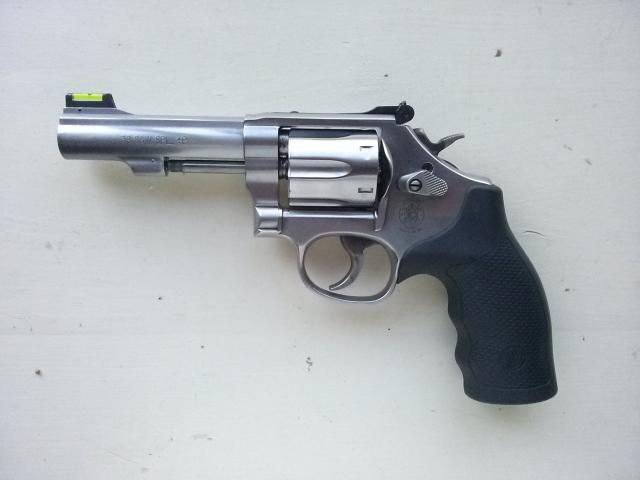Well I think I got the need for more odd ball calibers out of my system and now its time to focus on marksmanship.
I started shooting untrained about 5 years ago, bought a G29, S&W 500 ES, NAA .22 Magnum and a GP100 .327 Federal Magnum is on its way. I also started reloading a couple weeks ago and shot my first self rolled rounds today.
Before I headed out today I replaced the Glock stock barrel with a LoneWolf. When I was done testing my rounds I tried really hard to archive some good results. I was surprise that I could get a couple decent groups together. Maybe the LoneWolf barrel helped. But I also realized that I flinch and blink every first round of a magazine, sometimes even more.
The 10mm rounds had been pretty hot. The brass bouncing of the wall right into my face didn't help.
I really like reloading so far but now its time to learn how to shot really well.
What hand gun do you guys suggest to get me started with? Will the .327 work? Any good marksmanship books or DVDs out there?
I started shooting untrained about 5 years ago, bought a G29, S&W 500 ES, NAA .22 Magnum and a GP100 .327 Federal Magnum is on its way. I also started reloading a couple weeks ago and shot my first self rolled rounds today.
Before I headed out today I replaced the Glock stock barrel with a LoneWolf. When I was done testing my rounds I tried really hard to archive some good results. I was surprise that I could get a couple decent groups together. Maybe the LoneWolf barrel helped. But I also realized that I flinch and blink every first round of a magazine, sometimes even more.
The 10mm rounds had been pretty hot. The brass bouncing of the wall right into my face didn't help.
I really like reloading so far but now its time to learn how to shot really well.
What hand gun do you guys suggest to get me started with? Will the .327 work? Any good marksmanship books or DVDs out there?


